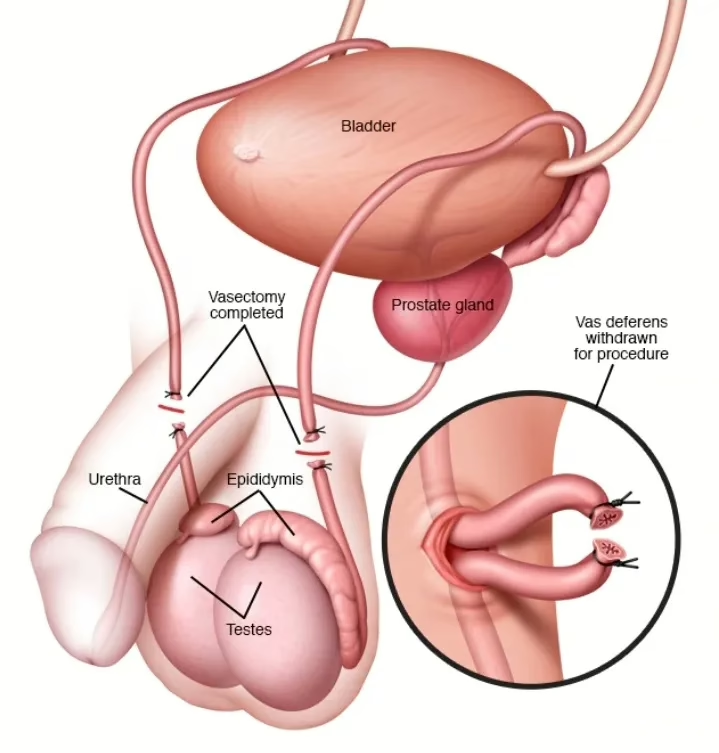In the intricate landscape of fertility, numerous factors can shape a couple’s journey toward conception. One often-overlooked aspect with profound implications is Retrograde Ejaculation. While discussions about reproductive health abound, this condition remains relatively obscure. Yet, its impact on a man’s fertility cannot be underestimated. This comprehensive guide seeks to illuminate the complexities of retrograde ejaculation, unraveling its causes, symptoms, and the far-reaching implications it carries for fertility. By shedding light on this less-explored facet of reproductive health, we aim to empower individuals and couples with knowledge, fostering a deeper understanding of the challenges posed by retrograde ejaculation and offering insights into the potential paths toward overcoming this hurdle on the path to parenthood.
What are the symptoms?
Symptoms of Retrograde Ejaculation: Unraveling the Telltale Signs
Retrograde ejaculation, a condition where semen is redirected into the bladder instead of being expelled from the penis during ejaculation, manifests through distinct symptoms. Recognizing these signs is pivotal for timely diagnosis and intervention. Here’s a detailed exploration of the symptoms associated with retrograde ejaculation:
- Dry Orgasms: One of the hallmark symptoms of retrograde ejaculation is the experience of dry orgasms. Men affected by this condition may notice the absence of the usual semen release during ejaculation.
- Cloudy Urine After Ejaculation: Following ejaculation, individuals with retrograde ejaculation may observe a change in the appearance of their urine. Semen, redirected into the bladder, may be expelled with the subsequent urine, giving it a cloudy or milky appearance.
- Infertility Concerns: Couples struggling to conceive may discover retrograde ejaculation as an underlying cause. The absence of ejaculated semen during intercourse can significantly impact fertility, posing a challenge to natural conception.
It’s important to note that the absence of visible symptoms does not rule out the possibility of retrograde ejaculation. In some cases, individuals may be asymptomatic, and the condition may only become apparent when fertility issues arise.

Causes of Retrograde Ejaculation
Understanding these various causes is crucial for healthcare professionals in diagnosing and treating retrograde ejaculation effectively. Addressing the underlying medical conditions or adjusting medications when appropriate can be key steps in managing and mitigating the impact of retrograde ejaculation on reproductive health.
Medical Conditions
Diabetes: One of the medical conditions linked to retrograde ejaculation is diabetes. Diabetes, especially when poorly controlled, can have adverse effects on nerves and muscles throughout the body. The condition may lead to neuropathy, affecting the nerves that control the bladder neck muscles involved in the ejaculation process. As a result, the failure of these muscles to function properly can contribute to the occurrence of retrograde ejaculation.
Multiple Sclerosis: Another medical condition associated with retrograde ejaculation is multiple sclerosis (MS). MS is an autoimmune disease that affects the central nervous system, leading to damage in the communication between the brain and other parts of the body. Nerve damage caused by MS can extend to the nerves controlling ejaculation, potentially disrupting the normal process and causing semen to flow backward into the bladder during ejaculation.
Surgical Procedures
Prostate Surgery: Certain surgical procedures, particularly those involving the prostate, can contribute to retrograde ejaculation. For example, transurethral resection of the prostate (TURP), a common surgical intervention for prostate issues, can inadvertently affect the normal functioning of the bladder neck muscles. These muscles play a crucial role in directing semen out of the body during ejaculation, and any disruption to their function can result in retrograde ejaculation.
Medications: In some cases, retrograde ejaculation can be triggered by the use of specific medications. Medications such as alpha-blockers and certain antidepressants may interfere with the normal ejaculatory process. Alpha-blockers, commonly prescribed for conditions like high blood pressure and prostate issues, can relax muscles in the bladder neck, making it more likely for semen to enter the bladder instead of being expelled from the body during ejaculation. Antidepressants may also influence the muscle contractions involved in ejaculation, leading to retrograde ejaculation as a side effect of the medication.
Symptoms of Retrograde Ejaculation:
Identifying the symptoms of retrograde ejaculation is crucial for early detection and intervention. Common signs include:
- Dry Orgasms: Men experiencing retrograde ejaculation may encounter dry orgasms, a phenomenon where the climax occurs without the usual release of semen. This absence of seminal fluid during ejaculation is a key indicator of the condition.
- Cloudy Urine After Ejaculation: A distinct sign of retrograde ejaculation is the presence of semen in the urine after climax. This can lead to post-ejaculation urine appearing cloudy due to the semen being redirected into the bladder instead of exiting the body through the penis.
- Infertility: Couples facing challenges in conceiving may discover that retrograde ejaculation is a contributing factor. The redirection of semen into the bladder can hinder the natural process of fertilization, making conception difficult for affected couples.
Diagnosing Retrograde Ejaculation:
Diagnosing retrograde ejaculation involves a combination of medical history assessment, physical examinations, and specialized tests. These may include:
IV. Diagnosing Retrograde Ejaculation:
Patient History: Gathering a comprehensive patient history is the initial step in diagnosing retrograde ejaculation. Healthcare professionals delve into the patient’s past, exploring potential contributing factors such as medical conditions, surgeries, and medication history. Understanding the context of the patient’s health is essential for identifying the root cause of retrograde ejaculation.
Physical Examination: A thorough physical examination follows, focusing on the genital and pelvic regions. This examination aims to reveal any signs of nerve damage, muscle abnormalities, or other physical factors contributing to retrograde ejaculation. Palpation and observation play key roles in assessing the overall health of the reproductive system.
Semen Analysis: Semen analysis is a crucial diagnostic tool, involving the examination of a semen sample. By analyzing the composition of the ejaculate, healthcare professionals can determine the presence and quality of sperm. In the case of retrograde ejaculation, this analysis may reveal a lack of sperm in the ejaculate, indicating that it is being redirected into the bladder.
Post-Void Residual Volume Test: The post-void residual volume test measures the amount of urine remaining in the bladder after voiding. In the context of retrograde ejaculation, this test helps identify if semen is entering the bladder during ejaculation instead of being expelled from the body. Elevated levels of post-void residual volume can be indicative of retrograde ejaculation and guide healthcare professionals in confirming the diagnosis.
Fertility Implications
Retrograde ejaculation can have a significant impact on fertility, making conception challenging for couples. Understanding the fertility implications is crucial for those seeking to overcome this obstacle:
- Assisted Reproductive Techniques (ART): Couples may opt for ART procedures, such as intrauterine insemination (IUI) or in vitro fertilization (IVF), to bypass the challenges posed by retrograde ejaculation.
- Medication and Lifestyle Changes: In some cases, medications can help improve bladder neck muscle function. Additionally, lifestyle changes such as managing diabetes or adjusting medications may be recommended.
- Sperm Retrieval Procedures: Surgical procedures like sperm retrieval can be employed to obtain sperm directly from the testicles for use in ART.
Treatment Options
The approach to treating retrograde ejaculation depends on its underlying cause:
Medication: Medication plays a pivotal role in managing retrograde ejaculation. Imipramine, a tricyclic antidepressant, is commonly prescribed. It functions by tightening the bladder neck muscles, preventing the backward flow of semen into the bladder. While not universally effective, imipramine has shown promise in improving ejaculatory function. Regular monitoring and dosage adjustments are essential, and individuals should be aware of potential side effects associated with this medication.
Lifestyle Modifications: Lifestyle modifications constitute a non-invasive approach to address retrograde ejaculation. For individuals with underlying conditions like diabetes contributing to the condition, managing blood sugar levels becomes paramount. Adopting a healthier lifestyle, including regular exercise and a balanced diet, can positively impact overall reproductive health. Additionally, avoiding substances that exacerbate retrograde ejaculation, such as certain medications or recreational drugs, can enhance treatment outcomes.
Surgical Interventions: In cases where medication and lifestyle changes fall short, surgical interventions may be considered. Surgical correction aims to restore the normal anatomy and function of the bladder neck and surrounding structures. Procedures may involve repairing damaged nerves or muscles responsible for ejaculation. While effective, surgical interventions are typically reserved for specific cases where conservative approaches prove insufficient. Careful consideration of potential risks and benefits is essential, and individuals should consult with their healthcare provider to determine the most suitable course of action.
Conclusion
Retrograde ejaculation is a complex condition that requires a multidimensional approach to diagnosis, treatment, and support. By delving into the causes, symptoms, and fertility implications, individuals and couples can make informed decisions about managing this condition. As the field of reproductive medicine continues to advance, there is hope for improved treatments and better outcomes for those affected by retrograde ejaculation. In the journey towards conception, knowledge and proactive measures play a pivotal role, empowering couples to navigate the challenges and embrace the possibilities of building a family.
Frequently Asked Questions:-
What is the main cause of retrograde ejaculation?
Causes. Retrograde ejaculation is uncommon. It most often occurs when the opening of the bladder (bladder neck) does not close. This causes semen to go backward into the bladder rather than forward out of the penis.
How do you fix retrograde ejaculation?
1. Imipramine, an antidepressant.
2. Midodrine, a medicine that constricts blood vessels.
3. Chlorpheniramine and brompheniramine, antihistamines that help relieve allergies.
4. Ephedrine, pseudoephedrine and phenylephrine, medicines that help relieve symptoms of the common cold.
At what age retrograde ejaculation occurs?
This is due to neuropathy of the bladder sphincter. Post-pubertal males (aged 17 to 20 years) who experience repeated episodes of retrograde ejaculation are often diagnosed with urethral stricture disease shortly after the initial complaint arises.
What are the benefits of not ejaculating for 7 days?
Practicing semen retention is thought to boost testosterone levels, improve fertility, and lead to more intense orgasms. It is hard to say whether there may be any real benefits of not ejaculating (medically referred to as semen retention). There is not enough scientific evidence to recommend this practice to all men.
Does Viagra help ejaculation?
Viagra will not make you come or prevent premature ejaculation. Viagra is primarily an erectile dysfunction medication and does not directly impact time to ejaculation. Can Viagra be used to cure premature ejaculation? Viagra is not usually prescribed to treat premature ejaculation.
Which nerve is damaged in retrograde ejaculation?
Retrograde ejaculation (RE) is the abnormal passage of ejaculate into the bladder after orgasm. This is associated with dysfunction of the internal urethral sphincter mechanism which can be caused by autonomic neuropathy or iatrogenic damage to sympathetic nerves or the bladder neck.
Read Also:


